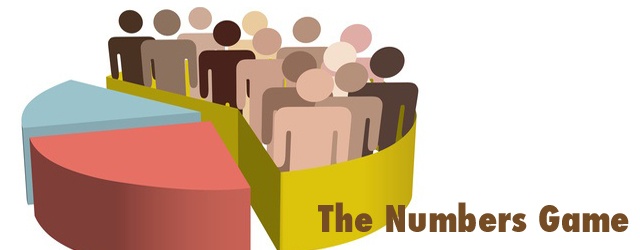Arkansas now 31st largest state as population nears 3 million mark
by December 28, 2015 4:24 pm 787 views

Arkansas’ population increased by 11,369 residents between the summer of 2014 and 2015, putting the Natural State on course to break the 3 million mark by the end of 2017 at the current growth rate, according to state population estimates recently released by the U.S. Census Bureau.
The state’s population grew to 2,978,204 as of July 1, 2015, up from 2,966,835 on July 1, 2014. Arkansas is now the 31st largest state by population, leapfrogging Mississippi (2,922,576) to move up one spot behind Iowa at 3,123,899, Census Bureau data shows.
Since 2010, Arkansas’ population base has grown along with most of the rest of the South, climbing 2.1% from 2,915,918 to its current position. Most of the state’s population growth of 62,246 over the past five years occurred naturally as there were 44,508 more births than deaths.
International residents migrating to Arkansas accounted for most of the remaining population increase since 2010 with 17,755 foreign-born inhabitants settling in the state. By contrast, a net total of only 249 residents from other U.S. states decided to migrate to Arkansas over the same period.
U.S. POPULATION AT 321 MILLION, SOUTH ON THE RISE
Nationally, the U.S. as a whole saw its population increase by 0.79% over the period to 321.4 million, slightly faster than the rate of growth over the previous one-year period (0.78%).
The South, by far, is still the nation’s largest geographic area with more than 121.1 million residents. The West was a distant second with 76 million residents, followed by the Midwest with 67.9 million and the Northeast with 56.2 million.
Notably, by adding an average of 281 people per day during the last year, North Carolina’s population crossed the 10 million mark, making the state the ninth in that category. North Carolina’s population gain over the one-year period ranked it behind only Texas, Florida, California, Georgia and Washington.
Florida added more people than California for the first time in nearly a decade. Florida’s gain of 365,703 people also pushed it past 20 million, becoming the third state to reach that milestone. California continued to be the most populous state on July 1, 2015, with 39.1 million, followed by Texas with 27.5 million.
North Dakota was the nation’s fastest-growing state or equivalent over the last year, for the fourth year in a row. Its population increased 2.3%, followed by 1.9% growth in Colorado, the District of Columbia and Nevada. Each of the 10 fastest-growing states was in the South or West with the exception of North Dakota.
Seven states lost population between July 1, 2014, and July 1, 2015: Illinois (22,194 or -0.17%), West Virginia (4,623 or -0.25%), Connecticut (3,876 or -0.11%), Mississippi (1,110 or -0.04%), Maine (928 or -0.07%), Vermont (725 or -0.12%) and New Mexico (458 or -0.02%).
In addition to the 50 states and the District of Columbia, the new statistics also include estimates for Puerto Rico. On July 1, 2015, Puerto Rico had an estimated population of 3.5 million, a decline of 60,706, or 1.7%, from one year earlier.
The Census Bureau produces population estimates each year, allowing the public to gauge the growth and demographic composition of the nation, states and communities. These statistics use administrative data to estimate population change between census years, using the decennial census count as a starting point. Local governments use estimates to locate services, and the private sector uses them to locate businesses.
The Census Bureau also released estimates of the number of people 18 and older in the U.S., states and Puerto Rico. The downloadable file also includes total population and the percentage of people 18 and older. In 2015, there were 247.8 million voting-age residents in the U.S., comprising 77.1% of the nation’s population.
During 2016, the Census Bureau will release estimates of the 2015 population of counties, cities and towns, and metropolitan and micropolitan statistical areas as well as national, state and county population estimates by age, sex, race and Hispanic origin. Population estimates for Puerto Rico and its municipalities by age and sex will be released as well.
